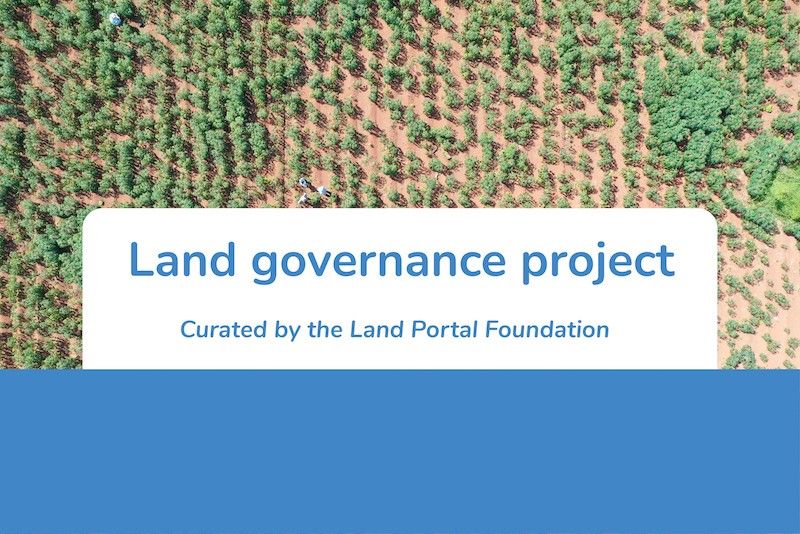Community / Land projects / Promoting integrated metropolitan planning and innovative urban technology investments in Brazil
Promoting integrated metropolitan planning and innovative urban technology investments in Brazil

€11078940.86
02/22 - 02/22
Completed
This project is part of
Implementing Organisations
Donors
Data Providers
Objectives
Brazilian metropolitan regions reduce greenhouse gas emissions, conserve biodiversity and achieve economic, social and environmental co-benefits through an integrated urban planning approach.
Other
Note: Disbursement data provided is cumulative and covers disbursement made by the project Agency.
Target Groups
The GEF-7 project aims to generate social, economic and environmental benefits for Brazil and its citizens. The project objective makes reference to co-benefits that will be generated in addition to mitigation and biodiversity benefits. 1) Social Benefits The project aims to create significant social benefits for local city populations by applying an integrated approach which facilitates collaborative and participatory urban development, leading to more inclusive cities. For instance, the development of project plans and pilot investments will be designed through participatory processes in each city. This will ensure that the concerns, needs and priorities of residents, local communities and civil society organizations will be considered and incorporated in such interventions, leading to outcomes that respond to social needs. Project activities will improve the management of important urban issues such as transportation, sanitation and urban sprawl, leading to an improvement in people’s quality of life in the pilot metropolitan regions. This will include as with regards to health (low-emission transport, improved sanitation management), safety (reduced urban sprawl leading to more compact cities, with better provision of urban services including lighting and policing), and productivity (reduced travel times, greater safety). The development of platforms for the integration of municipal plans and data, and the strengthening of capacities for better metropolitan governance, are some examples of activities that can increase the population’s access to important public services. Furthermore, the developed climate mitigation plan will promote a low-emission development pathway, leading to reduced air contamination and consequently reduced negative health impacts upon the local community. Plans to promote the scale-up of low-emission zones focus on developing spaces that promote a more livable and people-focused space. These will be designed as places for people, rather than for transport thorough-fares. A second category of benefits, which in some cases can be translated, or converted, into economic terms (in others not), consists of the social benefits derived from increased access to green space, both within urban centers and in urban and nearby protected areas. The project’s support for green space establishment and conservation has the potential to make a significant contribution to the wellbeing of urban residents in each of the pilot cities. Benefits are associated with recreational opportunities that encourage residents to spend increased amount of time outdoors in natural surroundings. In addition to physical and health benefits associated with enhanced opportunities for exercise (walking, biking, etc.), a range of additional health and wellness benefits, including enhanced cognition, arise from the restorative benefits of nature exposure. As noted, such benefits have an economic component as well, via improved health and wellbeing and enhanced productivity. Another important benefit correlates specifically with the theme of gender – and inclusivity more broadly. Mapping opportunities, training on issues and addressing gender, in addition to fostering a governance structure that strengthens women’s action, give voice to vulnerably etc., can be a gateway to empowerment of women and other marginalized groups within the project’s sites (see also the gender analysis and action plan for details). One example is the support for sustainable value chains on the Combú Island Environmental Protection Area (Belém), which has a strong potential to contribute to the strengthening of female leadership, in addition to rescuing culture and traditions of riverine traditional populations in the region. 2) Economic Benefits Through its component 3, the project aims to directly lead to economic benefits for Brazilian municipalities by enhancing the availability of financial offer for investing in sustainable urban development. By having enhanced access to such public financing, municipalities will be able to increase investment, and attract greater private investment, for promoting the development of sustainable cities. Increased investment in urban infrastructure is a significant job-creator and stimulus for responding from economic downturns, which many Brazilian cities currently find themselves within. The project also focuses on creating economic benefits for civil society and the private sector. On the former, through the development of integrated plans in component 1, the project aims to lead to reduced travel times (through prioritization of public and non-motorized transport) and reduced energy usage costs (through uptake of efficiency measures) for communities, resulting in increased productivity and household savings. The project also aims to directly kick-start new economic opportunities for the private sector. Building on the component 2 investments, national financing institutions will strengthen and create financial instruments for catalyzing new opportunities for private sector investment in areas such as transport, energy services and waste management. For instance, the project will support FINEP to strengthen financial instruments for incentivizing micro-, small- and medium-sized enterprises to innovate solutions for responding to local sustainable urban development challenges. This may build upon existing innovation calls it has in the areas of Technology 4.0, Innovative Women, and Investment in Innovative Startups, as related to the urban context. Improving metropolitan governance is also expected to promote better management of public resources and investments, potentially increasing the availability of resources to address other urban issues. If executed effectively, the project has the potential to change realities and leverage economic development where it intervenes locally. An example is the coordinated action between municipalities for basic sanitation solutions, which can potentially optimize public and private investments in each municipality through economies of scale, thus potentially generating a surplus for investment in other projects. Within the scope of pilot interventions to be carried out by the project, activities that revive the local trade and services through urban upgrading projects may generate economic gains and potentially also employment opportunities. Another example relates to fostering sustainable tourism and the sustainable production of local produce from certain protected areas. They represent an important source of income to local people and an incentive to protect nature and support these areas. Taking a longer-term view, it is also possible to consider reductions in public health costs as a result of stimulating low-emission zones and transport modes. Likewise, better structuring of the urban environment through requalification can also have climate change adaptation benefits and result in potential savings for addressing the consequences of climate change, for example, in connection with the recovery of urban infrastructure affected by natural disasters. 3) Environmental Benefits Beyond mitigation and biodiversity benefits to be generated by the project, described in section 6, there are many other environmental benefits that result from its interventions. These include: (i) reduced pollution in the form of noise, water, air and soil pollution; (ii) reduced heat island effect associated with excess traffic and the burning of fossil fuel; (iii) the spontaneous creation of urban gardens by surrounding communities as a result of the enhancement of green areas and their inclusion into the overall management of the wider landscapes, fighting thereby land degradation and food security locally. Concretely, in Belem, Teresina and Florianopolis the climate mitigation and low-emission technology action plans, the low-emission zone pilots, and the low-emission zone plans will lead to reduced air contamination and heat island effect. Furthermore, in Belem, the integrated solid waste plan will lead to less solid waste disposal, more solid waste recycling and re-use, and consequential reduced land and ground water contamination.Furthermore, the GEF project, through its interventions in component 1 and 2, will contribute directly to increasing the resilience and supporting the adaptation of the metropolitan regions of Belem, Florianopolis and Teresina. On the one hand, the integrated planning platforms will support metropolitan actors to visualize key geospatial data, including layers related to geographical and physical attributes of the city’s environment. Through these platforms and such visualization, the cities will be able to plan more effectively for building resilience, for instance with regards to managing coastline development to avoid erosion and increased possibility of flooding in Belem and Florianopolis. Furthermore, the integrated plans that the cities develop in component 1 will take into account risk matrices, ensuring that new developments incorporate considerations of urban resilience. For instance, in Teresina, the climate mitigation and low-emission technology plan may also focus on nature based solutions and other interventions to reduce the urban heat island (UHI) effect, one of the key challenges in the city. In this way, through natural and low-emission cooling measures, the plan will support the city to reduce GHG emissions generated through air conditioning, as well as increase the city’s resilience to temperature rise.Component 2 also contributes directly to climate adaptation and resilience benefits. While the exact solutions will be determined during project execution, the integrated low emission street, block and district in Belem, Teresina and Florianópolis (Ouputs 2.1, 2.3 and 2.4) may include nature-based solutions that reduce UHI effect, but also serve to support storm-water runoff management and reduce flood impacts. This may also include solutions related to green infrastructure (such as green façades and roofs). The low-emission zones may also pilot solutions such as the retrofitting of public buildings and the use of sustainable materials with high thermal inertia to address UHI effects, increasing local resilience to increased temperatures in all three cities. Furthermore, the agroforestry production chain in Combu Island (Output 2.2) aims to provide benefits for climate resilience by reducing the vulnerability to extreme events both with regards to agriculture productivity and for the families that rely on the income from such agriculture. In synthesis, project interventions aim to reduce the vulnerability of communities directly involved in the areas of intervention by the implementation of integrated and climate-resilient solutions.




